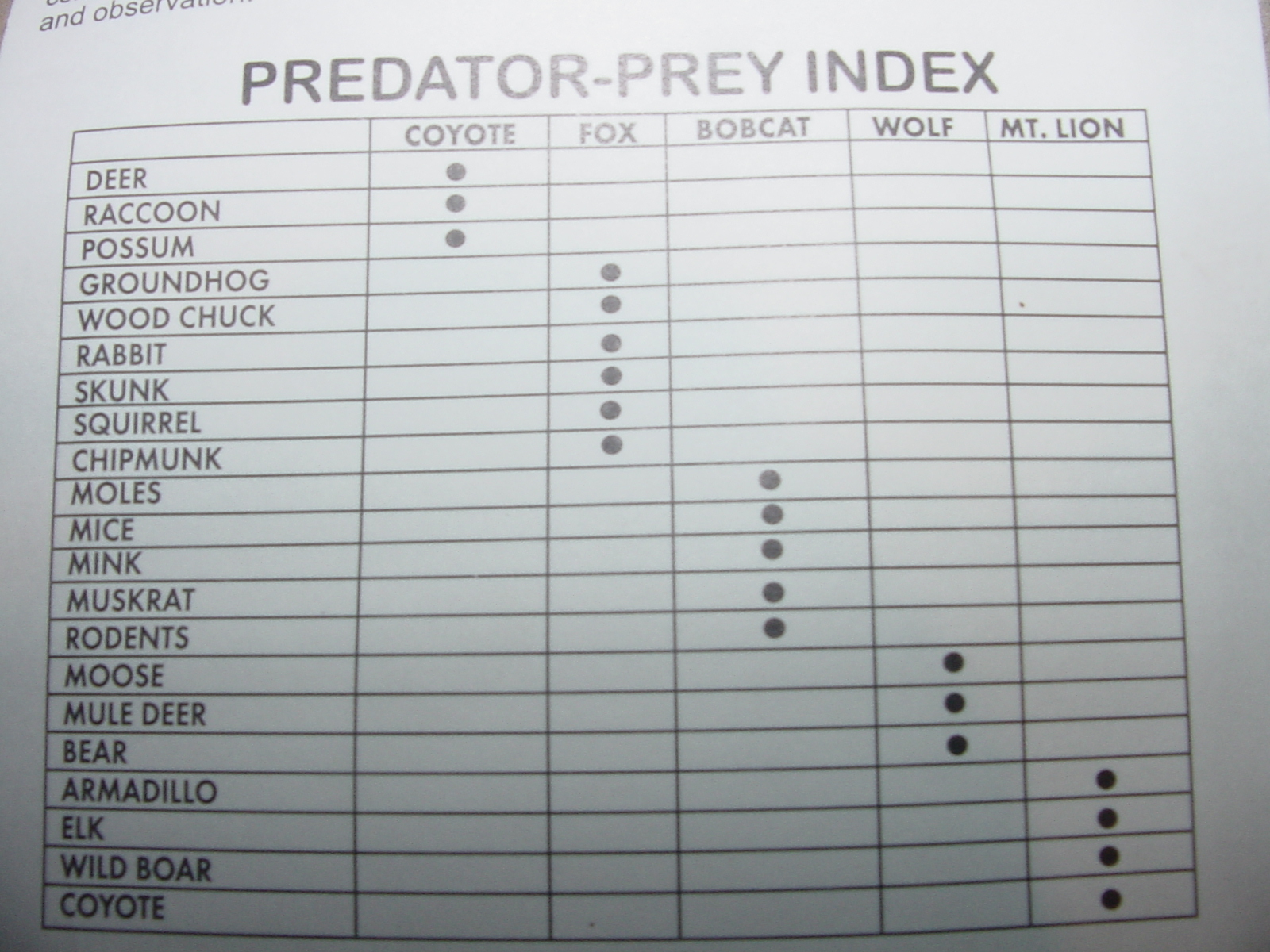|
It is the time to put the final touches on
getting my yard ready for the winter. The grass has gotten its last "burr-cut"
waiting for its herbal hibernation. All the transplanting has been done, and
I've trimmed back the scrubs and trees. Everything is done but one
thing-putting out the fox urine.
 I have put off this final activity until now for several
reasons. This is the first time that I have worked with fox urine and am not
sure the best way of handling it. Another issue is that I wanted to wait until
the weather worsened enough to force humans inside behind tightly closed
windows. Having no experience with fox urine, I don't know what the aroma would
be like. Therefore, as my Thanksgiving dinner plans are being formulated, I am
in the process of placing fox urine around my yard. I only hope that no one
will get a whiff of the fox as they come for a delicious Thanksgiving dinner. I have put off this final activity until now for several
reasons. This is the first time that I have worked with fox urine and am not
sure the best way of handling it. Another issue is that I wanted to wait until
the weather worsened enough to force humans inside behind tightly closed
windows. Having no experience with fox urine, I don't know what the aroma would
be like. Therefore, as my Thanksgiving dinner plans are being formulated, I am
in the process of placing fox urine around my yard. I only hope that no one
will get a whiff of the fox as they come for a delicious Thanksgiving dinner.
Those of you who aren't ecologically savvy are probably
wondering about the inclusion of fox urine in my yard. Last winter, I noted
with a great deal of consternation that the local rabbit population nearly
decimated my scrubs-nibbling them back to the trunks. "Those rascally rabbits"
had violated my territoriality and had eaten years of growth away from several
plants.
I resolved mid-winter last year that
those fury herbificous chewers weren't going to use my yard as their larder
again. The only question was how to stop them. I could blow their heads off
with a shotgun, I could trap them, I could put dried blood or mothballs all
around, or I could construct wire fences around all my plants. None of the
above options were desirable for various reasons. Therefore, out I trod on a
chilly November day to spread a little fox urine around my yard.
You are probably wondering about the value of using fox urine around
the yard. Fox urine is an environmentally safe means by which I plan to protect
my wintering vegetation. Scientific research has determined that certain
destructive animals that eat bushes and shrubs will avoid them if the smell of a
particular predator is present.
 For
example, you can see by consulting the predator-prey index that if you are
troubled by mice or muskrats then you would use bobcat urine. Or if you have
problems with wild boar eating your evergreens then you would put out mountain
lion urine. With my problem with rabbits, fox urine is what is necessary. Not
only does this shoo away bunnies, but if a stray wood chuck, skunk, squirrel, or
chipmunk were to venture in, the fox urine will send an aromatic shot past its
nostrils warning them that a fox is in the neighborhood. The urine places fear
in the hearts of those little critters. They know that they risk being brutally
pulled apart limb from limb and tearing out each of their internal organs one at
a time until death and devouring occurred. This horrific warning will surely
stops them in their tracks. For
example, you can see by consulting the predator-prey index that if you are
troubled by mice or muskrats then you would use bobcat urine. Or if you have
problems with wild boar eating your evergreens then you would put out mountain
lion urine. With my problem with rabbits, fox urine is what is necessary. Not
only does this shoo away bunnies, but if a stray wood chuck, skunk, squirrel, or
chipmunk were to venture in, the fox urine will send an aromatic shot past its
nostrils warning them that a fox is in the neighborhood. The urine places fear
in the hearts of those little critters. They know that they risk being brutally
pulled apart limb from limb and tearing out each of their internal organs one at
a time until death and devouring occurred. This horrific warning will surely
stops them in their tracks.
 As I placed the urine containers around at strategic spots, I paused
to reflect upon the predator-prey index. I am convinced that urine will work.
However, is there much difference between the urine of say a fox than a coyote?
Are those bunnies that frequented my scrubs fearful of a fox and not a coyote?
I can't imagine some little bunny foo-foo getting a whiff of terror in the urine
of a fox and not be equally fearful of a coyote, bobcat, wolf, or mountain
lion. One would think that my herbivorous bunnies would not venture any further
regardless of what animal's urine was placed around my yard.
As I placed the urine containers around at strategic spots, I paused
to reflect upon the predator-prey index. I am convinced that urine will work.
However, is there much difference between the urine of say a fox than a coyote?
Are those bunnies that frequented my scrubs fearful of a fox and not a coyote?
I can't imagine some little bunny foo-foo getting a whiff of terror in the urine
of a fox and not be equally fearful of a coyote, bobcat, wolf, or mountain
lion. One would think that my herbivorous bunnies would not venture any further
regardless of what animal's urine was placed around my yard.
My naturalistic ponderings were abruptly suspended, because I
accidentally spilled some of the fox urine repellant on my fingers. I will
return to this discussion after I am free of the aroma now impregnated into
every pore several fingers-it may be awhile.
|






